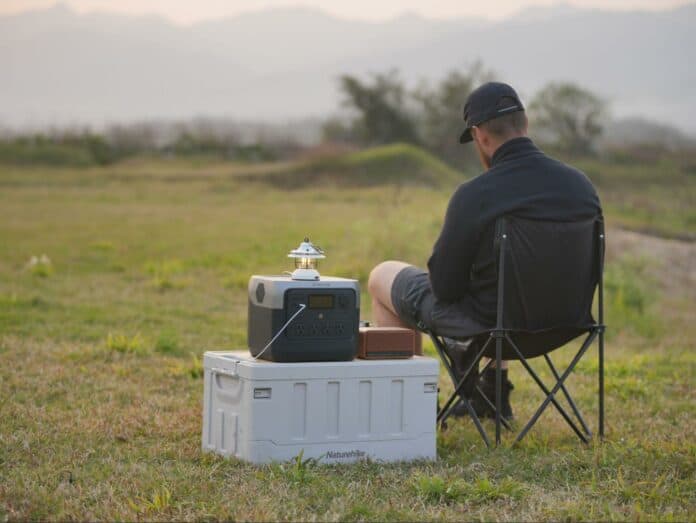Table of Contents
Understanding the lifespan of lithium-ion (Li-ion) batteries is crucial for making the most out of your electronic devices. These batteries, from smartphones to solar power storage, power numerous aspects of our daily lives. But how long can you expect them to last?
The longevity of Li-ion batteries is primarily determined by the number of charging cycles they undergo, the conditions under which you use them, and how they’re maintained.
In this article, we will explore these factors, offering insights into the expected lifespan of Li-ion batteries and how to make them last longer.
What’s the Expected Lifespan of Lithium-Ion Batteries?
A charging cycle refers to the process of fully charging a battery from 0% to 100% and then discharging it back to 0%. So, a ¼ cycle occurs when a battery is discharged to 75% before being fully charged again.
Most Li-ion batteries have an expected lifespan of around 500 cycles. LiFePO4 batteries have higher expected lifespans and can undergo thousands of cycles before the capacity is heavily affected.
For example, the EcoFlow DELTA Pro is rated for 3,000 cycles before storage capacity diminishes to 80%. Keep in mind the portable power station will still function as normal. It will just require recharging after a 20% shorter length of time.
How Charging Cycles Affect Lithium-Ion Battery Capacity
Charging cycles have a significant impact on the capacity of a lithium-ion battery. As mentioned above, a charging cycle refers to a battery’s full charge and discharge.
Every time a lithium-ion battery goes through a charge cycle, its capacity (the total amount of power it can hold) slightly decreases. That decrease is a normal part of the battery’s lifespan, resulting from physical and chemical changes that occur within the battery during the charge and discharge process.
Lithium-ion batteries — like those found in smartphones, solar power systems, and electric vehicles — have a finite number of charging cycles before they’re considered to be at the end of their useful life. This can occur anywhere between 2,000 and 10,000 full charge cycles in the case of a lithium-iron phosphate (LiFePO4) battery.
However, a battery doesn’t suddenly become useless once it reaches the end of its rated cycle life. Instead, its capacity will be lower. For example, after 3,000 full cycles, the EcoFlow RIVER 2 Max will still have a capacity of at least 80%.

What Other Factors Affect Lithium-Ion Battery Capacity?
In addition to charging cycles, other factors can affect battery capacity:
Temperature
Extreme temperatures can affect battery performance and longevity. High temperatures can cause a battery to degrade faster, while very low temperatures can temporarily decrease the battery’s capacity and performance.
Overcharging
Lithium-ion batteries without intelligent battery management don’t respond well to being left plugged in after fully charged. Many smartphones and other personal devices fall into this category. Overcharging can stress the battery and lead to faster degradation.
However, portable power stations and solar generators have built-in charge controllers and battery management systems that prevent overcharging. It’s completely fine to leave an EcoFlow portable power station plugged into a wall outlet 100% of the time. That way, when there’s a blackout, your PPS is fully charged.
Storage
If a lithium-ion battery is stored for an extended period, keeping it at a 40-60% charge level and in cool temperatures is best. Storing a battery at 100% charge or in a discharged state can cause it to degrade faster.
Fast Charging
Fast charging (commonly used for electric vehicles) is a valuable feature of Li-ion batteries. However, this charging method produces more heat and can cause stress for the battery. Frequent fast charging will reduce Li-ion battery capacity.
Discharge Rate
Fast discharge rates can negatively impact battery longevity. Avoid drawing high currents for extended periods — a slow, steady discharge of your battery is preferred.
For example, an EcoFlow Delta Max has a maximum AC output of 2400W (Surge 4600W) — but operating it at its maximum output at all times will lead to faster degradation of your battery. It’s important to give your lithium-ion battery a break sometimes or let it power smaller loads.
Frequently Asked Questions
Yes, lithium-ion batteries will degrade over time, even when not in use. Chemical reactions causing self-discharge and deterioration occur naturally over time, leading to decreased performance and lifespan. Periodic charging and storing at a cool temperature can help slow this process.
How long your lithium-ion battery will last before needing replacement varies widely and depends on how it’s used and cared for. Factors like deep discharging, overcharging, heat, and high load conditions can shorten your battery’s lifespan. For optimum longevity, proper management, like regular partial charging and avoiding high temperatures, is recommended.
Final Thoughts
A range of factors influences the longevity of lithium-ion batteries. While the number of charge cycles gives us an estimated lifespan, factors such as temperature, overcharging, storage conditions, fast charging, and discharge rates can significantly alter this.
Lithium-ion batteries degrade over time, even when not in use, and will eventually need to be replaced. How long it takes until a battery requires replacement depends on how the battery was used and cared for. You can optimise your battery’s lifespan with proper management, such as regular partial charging and avoiding extreme temperatures.
EcoFlow’s latest range of RIVER 2 and DELTA portable power stations and solar generators utilise LiFePO4 battery chemistry — a newer subset of Li-ion that offers even more benefits.
Learn more about LiFePO4 (LFP) batteries here.
